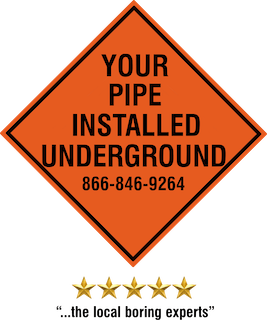Pilot Tube Auger Boring
Duct Bank Conduit - Pilot Tube Auger Boring Contractors
Pilot Tube Auger Boring (PTAB) is a trenchless construction method used for highly accurate pipeline installations, especially in applications requiring precise on-line and on-grade alignment. Below is an explanation of how PTAB integrates into various industries and applications like jack and bore, horizontal auger boring, oil & gas, sewer, drainage, and municipal projects.
Duct Bank Conduit - Pilot Tube Auger Boring Companies
What is Pilot Tube Auger Boring?
PTAB is a hybrid trenchless technology that combines elements of pilot tube steering, horizontal auger boring, and microtunneling. It is particularly effective for small-diameter pipelines (commonly 4 to 24 inches) requiring high accuracy and controlled installations.
The process involves three key stages:
- Pilot Tube Installation: A guided pilot tube with an optical guidance system is advanced, ensuring alignment and grade.
- Reaming/Enlargement: A reamer or cutter head enlarges the bore to the desired diameter.
- Pipe Installation: The product pipe (e.g., steel, PVC, or concrete) is jacked into place, following the pilot tube path.
Applications Across Industries
1. Jack and Bore
- PTAB is often considered a precision-focused evolution of traditional jack and bore.
- It is used where jack and bore lacks the required grade accuracy, as PTAB allows precise alignment and control.
- Ideal for gravity sewers or other systems where % fall must meet design tolerances.
2. Horizontal Auger Boring
- PTAB complements horizontal auger boring in areas needing enhanced accuracy.
- It combines the robustness of auger boring with the precision of pilot tube guidance for small-diameter, grade-critical installations.
3. Trenchless Technology
- PTAB is a core trenchless method due to its minimal surface disruption.
- It’s especially valued in urban or environmentally sensitive areas where open-trench excavation is not feasible.
4. Oil & Gas
- In oil and gas, PTAB is used to install conduits for pipelines crossing under roads, railroads, or other obstacles.
- While limited to smaller diameters, it ensures precise alignment, critical for avoiding conflicts with existing utilities.
5. Sewer, Drainage, and Stormwater
- PTAB excels in installing gravity-flow systems where on-grade precision (e.g., a 0.5% fall) is mandatory.
- The method avoids costly post-installation adjustments by ensuring the pipeline aligns with design specifications from the start.
6. On-Line and On-Grade
- PTAB’s optical guidance system ensures installations are precisely on-line (horizontal alignment) and on-grade (vertical slope).
- Essential for municipal and gravity-driven systems like wastewater and stormwater pipelines.
7. Roads and Railroads
- PTAB is widely used for crossings under roads and railroads, where traditional excavation would disrupt traffic or rail operations.
- Compliance with strict engineering tolerances is critical to avoiding settlement issues in these areas.
8. Municipal and Government Projects
- PTAB is frequently specified in municipal projects due to its precision, cost-effectiveness, and low environmental impact.
- It’s a preferred method for installing utility pipelines in densely populated or regulated areas.
Advantages of PTAB
- High Precision: Achieves grade and alignment tolerances as low as ±0.1%.
- Cost Efficiency: Minimizes risks of over-excavation or misalignment.
- Minimal Disruption: Ideal for urban or sensitive environments.
- Versatility: Suitable for various soil types and pipeline materials.
Duct Bank Conduit - Pilot Tube Auger Boring Near Me
Key Challenges
- Limited to smaller diameters (compared to larger HDD or auger boring applications).
- May require skilled operators and advanced equipment, increasing initial investment.
In summary, PTAB is a critical innovation for trenchless projects requiring precision and reliability. It integrates seamlessly into jack and bore, horizontal auger boring, and a variety of industries, particularly in applications requiring on-line and on-grade accuracy.


